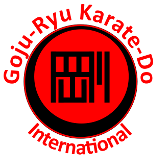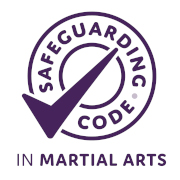Karateka Login
Safeguarding Contacts
- Gary Brandon
(Birmingham Welfare Officer)
gb@carisbrookeboston.com
Mobile: (07956) 510-093 - Matthew Taylor
(GKI Welfare Officer)
matt.sensei@twyfordkarate.club
Tel: (0118) 9706-943
Mobile: (07766) 684-254 - Carly Barrett-Greening
(GKI Supporting Contact)
waveconnections@outlook.com
Mobile: (07850) 732-303
News
-
The GKI Winter Gasshuku 2024Monday, 11th November, 2024The GKI Winter Gasshuku was hosted in Birmingham and was very well attended with over 100 students from Portugal, Spain, Belgium, Sweden and the UK. Sensei James Rousseau, Sensei
-
The GKI Winter Gasshuku 2022Saturday, 26th November, 2022The GKI's winter gasshuku was held last weekend and it was very well attended not only by the UK contingent but also Portugal and Sweden put in a good showing too. Both Tristan
Technical
Development of CapabilityLearning of karate skills should follow a path of ever increasing knowledge of techniques towards the development of creativity. A karate-ka should seek for clear, deep understanding and instinctive performance at each of the following stages.
Basic Form
Application
Variation
Improvisation
Free Form
Good karate is built on a strong foundation of correct technique, which is only achieved by many repetitions, ideally supervised by a master. The GKI Karate Grading Syllabus is structured to encourage a student to develop technique and knowledge in this way. There is little scope for variation, improvisation and freeform in kata but this flexibility shoild become evident in bunkai as performed by seniors.
Kata Applications - Kihon, Hiden and Oyo Bunkai
The depth of technique available from the study of just a few moves from kata is enormous. The original purpose of kata was to allow karate students to learn how to perform techniques properly while keeping the meaning of the more advanced techniques obscure . These secret or "hiden" techniques were only taught after a long period of training and after the master was convinced of the students sincerity. Kihon (basic) bunkai are obvious in many cases, but many advanced techniques can also have a Kihon bunkai. Oyo means variation, but personal variations should not be sought until the kihon and hiden bunkai are mastered. In our club we use kihon bunkai to link with Randori (collaberative free fighting development).
Some Useful Training Drills and Bunkai
The following drills ahave all been taught on GKI Gasshukus..
Hip Movement Combination
Nihon Yakusoku Kumite
Gekisai Dai Ichi - Randori Bunkai
Triangles
Sandan Ge Variations
Saifa Renzoku Bunkai
Ippon Yakusoku Kumite
Keri No Kata
Seiunchin Oyo Bunkai


